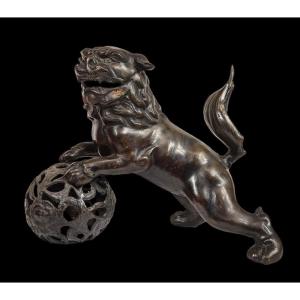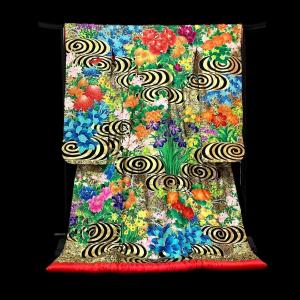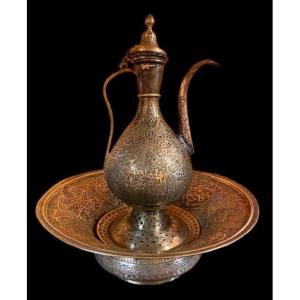Hand-knotted carpet from the 19th century measuring 96 cm wide by 143 cm long closed and 143 cm x 185 cm open.
superb artifact of Central Asian cultures, rare complete, because in 99% of cases the linen canvas and suspension ropes are removed, which is "more seller".
Ethnology piece with beautiful colors, red tending to brick, curry, black and white.
A touch of pale yellow is used in the border.
These carpets are recognized by their very particular style whose designs and colors have remained unchanged for centuries.
The term "chouval" or "joval" refers to a specific form of carpet whose design is in width normally presenting on the back a plain or embroidered kilim. ## It can be used as a cushion, when it is stuffed. It is found hanging, by both ends in tents and some yurts, which gives it a rounded shape.
Our model is the work of the Turkmen, a people of former nomads and semi-nomads, living in Turkestan. Model with a design of a very beautiful and great complexity.
The field naturally of a beautiful earth red almost copper red, is covered with octagons called guls.
Each Afghan or Turkmen tribe has its own gul.
The prerogative of these carpets are the "kotchaks", rams' horns that are found on almost all of these magnificent tribal pieces.
These carpets honor the guls, in the form of large octagons.
Originally the gul is a kind of tribal emblem that we call "tamga" in the same way as the European noble coats of arms.
The gul present on this model is called "GulTchemtche" They often frame a design of twin horns, called "kotchak" or "Bouinouze" The tamga was transmitted from one tribe to another during marriages, but also during wars.
During a defeat, the defeated tribe gave its gul to the victorious tribe.
The wool used is always very soft, it is taken from under the belly of the sheep, and these pieces are very thin, 2 mm thick, but very resistant.
Many motifs cover the field of this piece: Trees of life, stylized tarantulas, S, symbolizing God, the Kotchaks, combs for carding wool, the Guls... .
The old Chouvals are very appreciated by collectors of pieces originating from Central Asia.
# The most serious study corresponding to this type of tribal carpet is by Volkmar Gantzhorn. His incredible thesis, "the oriental Christian carpet" remains the bible of these carpets to understand the evolution of shapes and colors.
But the most complete ethnological study for its scientific interest concerning the carpets of Central Asia and which allowed a precise and complete inventory, is due to Valentina G. Moschkowa, following her four expeditions from 1929 to 1946.
# The difficulty, of these carpets and their definition, lies in the variety of patterns, the number of tribes, the distance of each on immense territories. Dimensions: Width: 96 cm x Length: 143 cm closed and 143 x 185 cm open
This carpet has been cleaned in a professional and ecological way.
FREE SHIPPING FOR FRANCE 0€ / EUROPE 25€ / WORLD 50€
For more information you can contact me at 06 13 36 09 30 and this 7/7 or by email at winsteinprovence@gmail.com, thank you in advance. www.winsteinprovence.com
COME VISIT US !!!
( texts, photo credit Winstein, all rights reserved ).
ref winstein 1116


















































 Le Magazine de PROANTIC
Le Magazine de PROANTIC TRÉSORS Magazine
TRÉSORS Magazine Rivista Artiquariato
Rivista Artiquariato